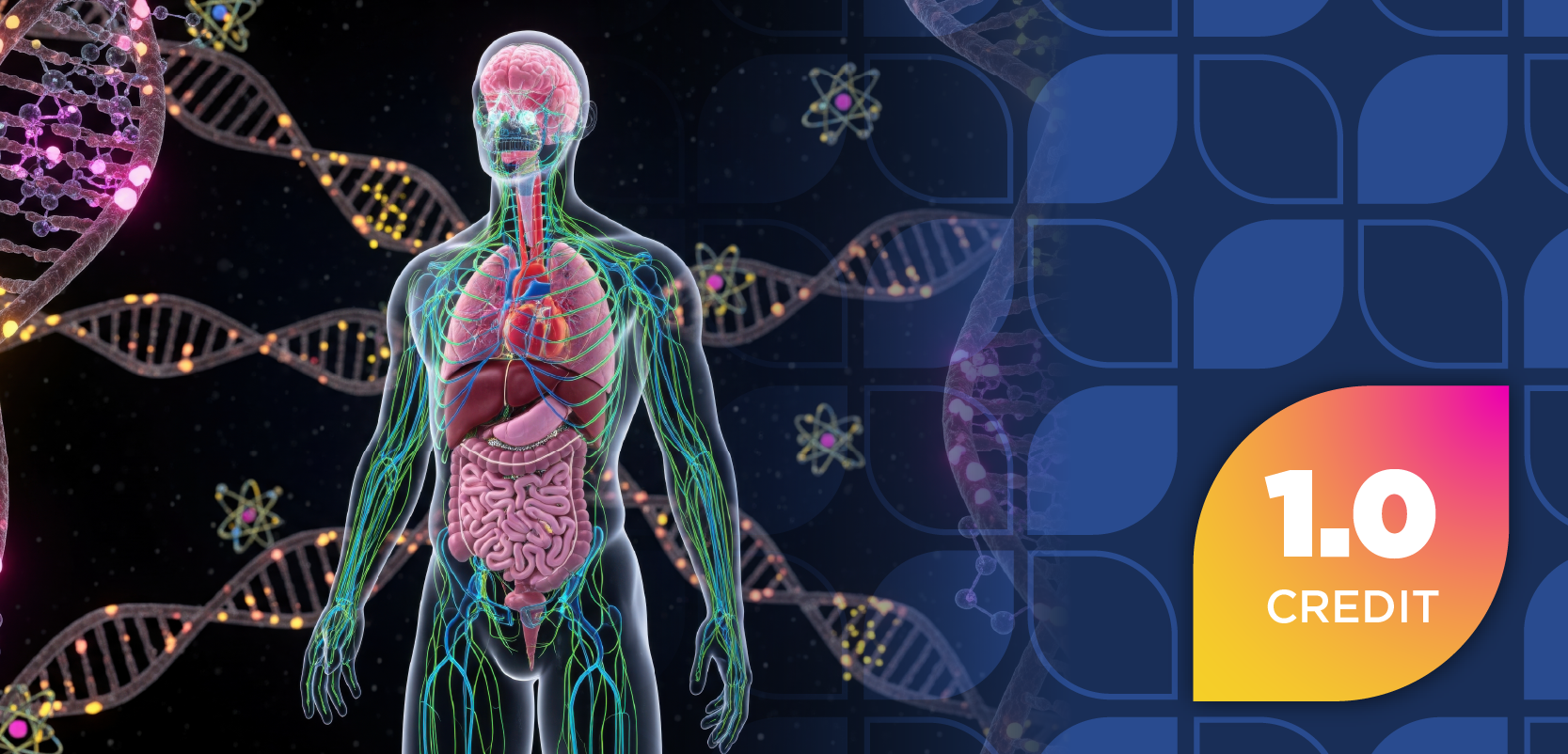
Pharmacy Practice in Focus: Health Systems
- November 2025
- Volume 14
- Issue 6
Pharmacists at the Center of Heart Failure Care: Navigating HFpEF and Finerenone Use
Key Takeaways
- HFpEF is prevalent and complex, often associated with comorbidities like diabetes and CKD, requiring careful management.
- Pharmacists are pivotal in optimizing treatment, particularly with new therapies like finerenone, despite challenges like cost and hyperkalemia.
Pharmacists remain essential to ensuring patients receive safe, effective, and accessible care amid expanding therapies.
Heart failure with preserved ejection fraction (HFpEF) is becoming increasingly prevalent and remains one of the most challenging forms of cardiovascular disease to manage. For pharmacists, the complexity of this condition highlights the need for careful navigation of treatment options, including the emerging role of finerenone (Kerendia; Bayer HealthCare Pharmaceuticals Inc), a nonsteroidal mineralocorticoid receptor antagonist (MRA) now under study for patients with HFpEF and heart failure with mildly reduced ejection fraction (HFmrEF).1 During a Pharmacy Times Clinical Forum, a group of pharmacists discussed how they are approaching this evolving treatment landscape and the potential impact of finerenone in practice.
HFpEF accounts for nearly half of all heart failure cases and is closely linked with comorbid conditions such as diabetes and chronic kidney disease (CKD).2 Despite the high prevalence of HFpEF, therapeutic options have historically been limited compared with heart failure with reduced ejection fraction. However, with the arrival of newer data on sodium-glucose cotransporter 2 (SGLT2) inhibitors and MRAs, opportunities for improved care are expanding. Pharmacists play a pivotal role in identifying patients eligible for these treatments, ensuring therapy initiation, and managing safety and access concerns as these treatments become part of daily practice.
The Growing Burden of HFpEF
HFpEF is both underdiagnosed and undertreated, in part due to documentation gaps. “Lots of times when I'm looking at these regional patients, they're not on a cardiology service…. I don't think it's on their radar,” Brad Williams, PharmD, BCPS, FHFSA, a clinical pharmacy coordinator for Cleveland Clinic in Ohio, said during the roundtable. Many patients are admitted for other comorbidities, such as diabetes or CKD, without sufficient follow-up on heart failure status.
The intricate nature of HFpEF—most times linked to hypertension, atrial fibrillation, obesity, and CKD—makes the management of the condition more complicated. The latest US data estimate that HFpEF accounts for up to 50% of all heart failure cases and is associated with high morbidity and hospitalization rates.1
Pharmacists in Multidisciplinary Care
Across institutions, pharmacists emphasized their involvement in guideline-directed medical therapy optimization. One recurrent theme was clinical inertia among providers: Hospitalists and noncardiology clinicians may not initiate therapies such as SGLT2 inhibitors or MRAs despite clear benefits. “As pharmacists, we can help them think about it,” Williams said, noting that reframing medications around comorbidity benefits (eg, kidney or diabetes outcomes) often encourages adoption.
Pharmacists also reported that a large part of their work was related to navigating cost and access barriers. Prior authorizations and specialty pharmacy teams were essential to obtaining coverage, especially for newer agents. Megan Huebner Valente, PharmD, BCACP, a heart failure pharmacy clinical specialist at the MetroHealth System in Cleveland, Ohio, described her institution’s success in reducing patient out-of-pocket costs through a dedicated prior authorization process, although she noted that outside of specialized teams is “where the holdup [probably] is.”
These experiences reflect the broader literature: Studies confirm that pharmacist involvement in heart failure management significantly improves medication optimization, adherence, and patient outcomes.2
MRAs in Heart Failure
The discussion turned to MRAs, where spironolactone and eplerenone have long been staples, but newer agents like finerenone are generating excitement. Moderator Craig Beavers, PharmD, FACC, FAHA, FCCP, BCCP, CACP, vice president of professional services at Baptist Health Paducah in Kentucky, provided an overview. “We have spironolactone, eplerenone, and finerenone—2 steroidal, 1 nonsteroidal. Spironolactone, [a] nonselective MRA, blocks androgen and progesterone. We have more adverse effects [AEs] that we're aware of, [especially due to] the gynecomastia-based effects, but eplerenone subsequently blocks MRA receptors, reducing blood pressure in a dose-dependent manner. [It also] appears to prevent myocardial vascular fibrosis. [It] causes fewer AEs because it doesn’t have as [many] of the endocrine-based [AEs]…. Finerenone, [a] nonsteroidal MRA, provided cardiovascular benefits and renal effects.”
The team pointed to the TOPCAT trial (NCT00094302), in which spironolactone revealed contradictory results, with advantages demonstrated in the Americas cohort but only neutral outcomes overall.3 The FINEARTS-HF study (NCT04435626) with finerenone showed that the drug reduced the rate of aggravation of heart failure in patients with HFpEF or HFmrEF, besides positive changes in patient-reported outcome measures like Kansas City Cardiomyopathy Questionnaire scores.4 Notably, finerenone seemed to provide a benefit starting (median: 2 months) before that of spironolactone's isolated delayed signal in subgroup analyses.
Hyperkalemia and Potassium Management
Pharmacists unanimously identified hyperkalemia as a key barrier to MRA use. Despite trial data suggesting benefits, many prescribers remain hesitant. “I don't know if people have such great data about how much mitigation risk of hyperkalemia there is with SGLT2,” Williams said, noting skepticism about whether SGLT2 inhibitors can reliably reduce potassium elevations.
Valente described how her clinic frequently uses potassium binders such as patiromer (Veltassa; Vifor Pharma) to support ongoing MRA therapy. “We have success with using them,” she said, emphasizing that proactive binder use allowed more patients to remain on MRAs long-term. This highlighted pharmacists’ role in balancing efficacy with safety—ensuring guideline-concordant therapy while managing AEs.
Recent guidelines from the American College of Cardiology/American Heart Association emphasize that pharmacists can play a role in laboratory monitoring and counseling around hyperkalemia risk mitigation strategies.5
Finerenone in Practice: Where Does It Fit?
Although spironolactone remains more widely used, pharmacists acknowledged finerenone’s potential advantages. Unlike steroidal MRAs, finerenone has been shown to confer renal protection and reduce atrial fibrillation incidence in some populations.4 For pharmacists, these features may support finerenone’s use in patients with overlapping CKD, diabetes, or arrhythmia risk.
However, barriers remain. Cost and insurance approval challenges limit uptake, while provider comfort levels are still developing. “I think [the] comfort level with potassium binders [is still limited],” Valente said, emphasizing that familiarity with older MRAs may influence prescriber preferences.
Importantly, pharmacist perspectives captured in recent coverage echo these forum insights. In a previous Pharmacy Times Clinical Forum, health care professionals highlighted both the promise of finerenone in HFpEF and the practical challenges of implementation, including cost, monitoring, and prescriber hesitancy.6 Together, these discussions reflect a balanced view: enthusiasm for new therapies paired with recognition of real-world barriers.
Conclusion
HFpEF and HFmrEF continue to challenge clinicians, but pharmacists are stepping forward as key drivers of improved care. From identifying patients and overcoming cost barriers to managing hyperkalemia and interpreting trial data, pharmacists are critical in translating evolving evidence into practice. As finerenone and other therapies expand the treatment toolbox, pharmacists will remain essential to ensuring patients receive safe, effective, and accessible care, anchoring the multidisciplinary team in a rapidly evolving field.
REFERENCES
Tsao CW, Aday AW, Almarzooq ZI, et al. Heart Disease and Stroke Statistics—2023 update: a report from the American Heart Association. Circulation. 2023;147(8):e93-e621. doi:10.1161/cir.0000000000001123
Bridy-Pappas AE, Margolis MB, Center KJ, Isaacman DJ. Streptococcus pneumoniae: description of the pathogen, disease epidemiology, treatment, and prevention. Pharmacotherapy. 2005;25(9):1193-1212. doi:10.1592/phco.2005.25.9.1193
Pitt B, Pfeffer MA, Assmann SF, et al. Spironolactone for heart failure with preserved ejection fraction. N Engl J Med. 2014;370(15):1383-1392. doi:10.1056/nejmoa1313731
Solomon SD, McMurray JJV, Vaduganathan M, et al. Finerenone in heart failure with mildly reduced or preserved ejection fraction. N Engl J Med. 2024;391(16):1475-1485. doi:10.1056/nejmoa2407107
Heidenreich PA, Bozkurt B, Aguilar D, et al. 2022 AHA/ACC/HFSA Guideline for the
Management of Heart Failure: a report of the American College of Cardiology/American Heart Association Joint Committee on Clinical Practice Guidelines. J Am Coll Cardiol. 2022;79(17):e263-e421. doi:10.1016/j.jacc.2021.12.012Antrim A. Pharmacists weigh promise and challenges of finerenone for patients with HFpEF. Pharmacy Times. July 24, 2025. Accessed October 2, 2025.
https://www.pharmacytimes.com/view/pharmacists-weigh-promise-and-challenges-of-finerenone-for-patients-with-hfpef
Articles in this issue
17 days ago
Looking Forward to 2026: Do More With LessNewsletter
Stay informed on drug updates, treatment guidelines, and pharmacy practice trends—subscribe to Pharmacy Times for weekly clinical insights.




















































































































































































































